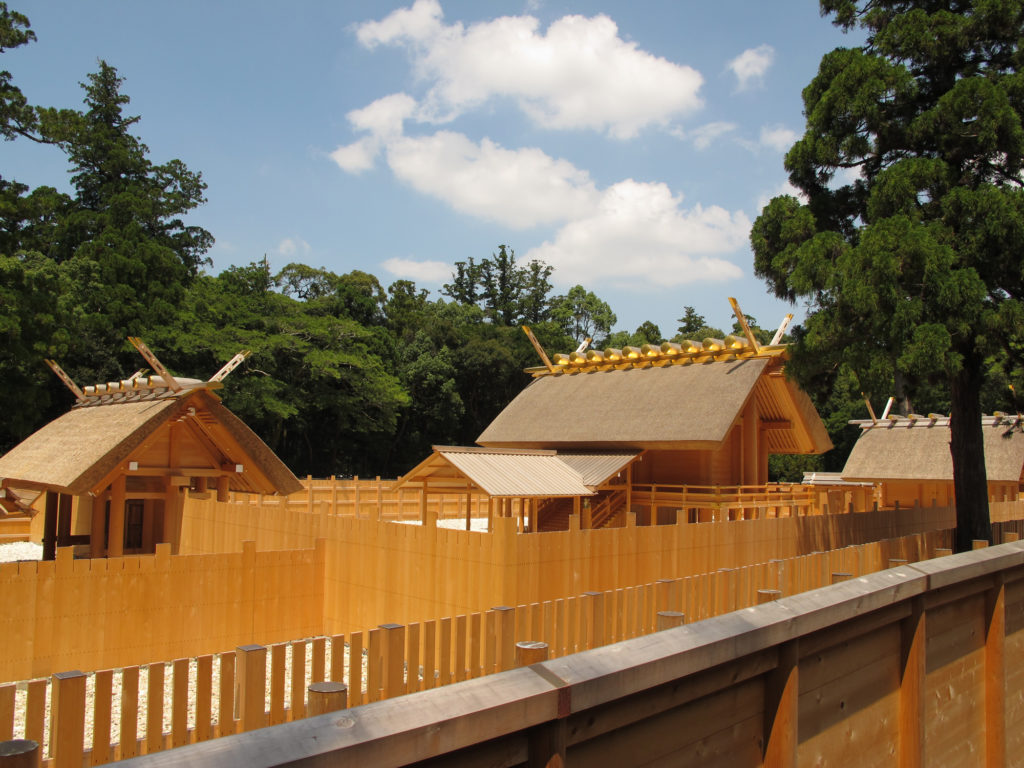
Naiku which enshrines Amaterasu Omikami, the kami (deity) of the sun
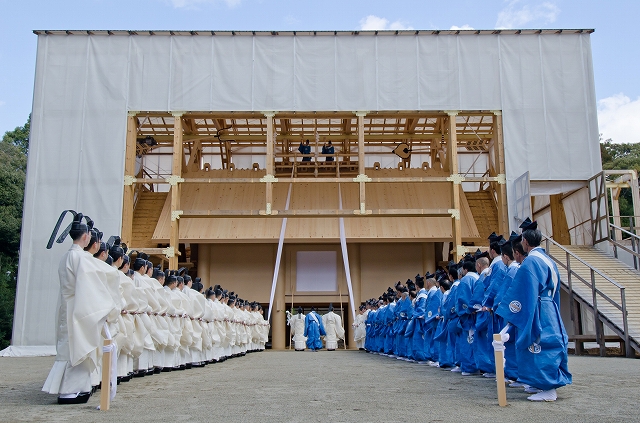
The Joto-sai ceremony, at which priests raise a munagi (ridge beam) into the main hall of Naiku
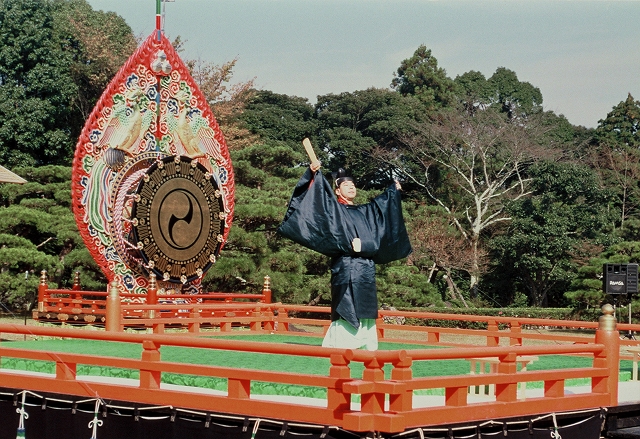
Scene from a celebratory ritual
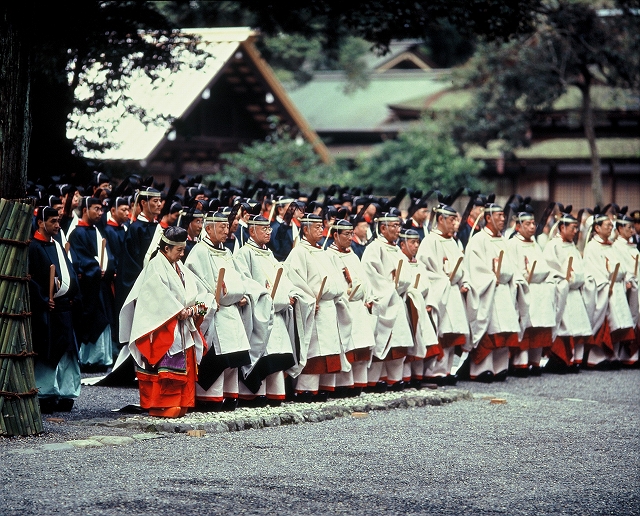
A purification ritual officiated by the head priest

The Sengyo ceremony, in which the deity Amaterasu Omikami is transferred to the newly rebuilt Naiku
Among the many Shinto shrines in Japan, the most revered is the Ise Jingu (Grand Shrine) in Mie Prefecture. Its most important ritual, known as “Shikinen Sengu,” was recently completed in October. In principle, every 20 years the shrine’s two main buildings — the main sanctuary, Naiku which enshrines the Sun Goddess Amaterasu Omikami and Geku which enshrines Toyouke Omikami the deity of agriculture and industry — along with 14 other shrines in Ise Jingu are completely rebuilt. At that time, the torii (gate), mikaki (wall). mikeden (dining hall) and some 65 other structures, ornaments, treasures and bridges are also renewed.
The ornamentation on the interior and exterior of the main hall consists of 525 varieties numbering a total of 1,085 items, whereas the so-called treasures consist of 189 varieties totaling 491 items. Shikinen Sengu ceremony is also an important occasion to hand down those traditional craftsmanship to future generations.
According to historical records, the practice of rebuilding the shrine was established by Emperor Tenmu during the Asuka Period (538 to 710), and was first carried out in the fourth year of the reign of Emperor Jito in 690. Afterwards, with a few exceptions, such as a civil war continuing more than 120 years during which reconstruction was not carried out, and some delays, the practice of Shikinen Sengu every 20 years has been maintained for some 1,300 years. In 1993, the 61st Shikinen Sengu was carried out. Beginning from 2005, the 62nd Shikinen Sengu proceeded with various ceremonies like sanctifying the cutting of trees for the new buildings, workers’ safety rituals during the reconstruction and festivals in which those who live adjacent to the shrine participated. In October, the final transfer of the symbol of Amaterasu Omikami to the new structure was completed. Total costs for the rebuilding and various ceremonies are estimated at 55 billion yen ($550 million).


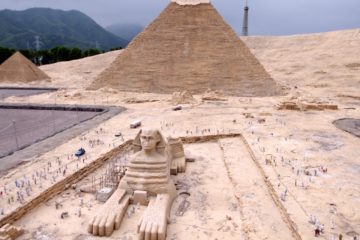
0件のコメント